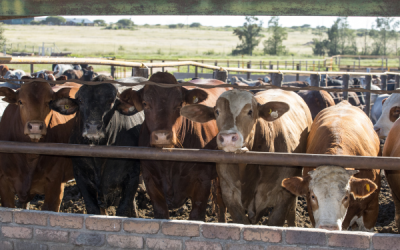ICYMI: One of the largest issues the agricultural industry faces is labor shortages. And those problems have persisted, even as the Covid-19 crisis has subsided.
A bipartisan group of House representatives are trying to address the issue by focusing on the H-2A program.
A final report released by the House’s Agriculture Labor Working Group (ALWG) outlined recommendations to relieve labor shortages. A few of the suggestions include:
- Streamlining recruitment efforts of H-2A employees
- Expanding H-2A programs beyond seasonal employment
- Standardizing employee compensation
The report also provides recommendations for expanding worker protections for H-2A employees.
Quick stats: Recent data showed that base wages for H-2A employees increased almost 41% from 2018 to 2024. Growth in ag wage rates are about 60% more than the growth in the overall U.S. index.
Soundbite: “We are losing farms in America at a rapid pace, and there is no question that our broken workforce system is partly to blame. This report makes it clear, once again, that there is bipartisan agreement on the need to improve the H-2A program to better serve America’s agriculture sector. This working group of the House Agriculture Committee spent months studying and discussing this issue and now delivers important bipartisan solutions for America’s struggling agricultural labor force.” — American Farm Bureau Federation President Zippy Duvall
Where this goes: While the report offers baseline recommendations, farmers and agribusiness still await legislative action that addresses labor protections and affordability.
ease pathogens, reduce byproducts, or impact gut microbiome. The FDA’s existing Food Additive Petition process would regulate these substances.
At the end of the day, this could give farmers more tools to feed their herds, while also making the additive approval process more efficient and consistent.
Soundbite: “This legislation would provide food manufacturers with a pathway to make truthful, non-misleading production, environmental, and well-being claims for animal foods that have been substantiated to provide such benefits more efficiently.” — David Fairfield, Senior VP of Feed at the National Grain and Feed Association
Late last week, the FDA Center for Veterinary Medicine revoked a 25-year-old policy that made it more difficult for animal food ingredient manufacturers to invest in the U.S. because of the slow regulatory process. Now, feed additives can be reviewed through the appropriate ingredient review process, not the CVM’s animal drug review rules.
However, for these changes to the regulatory review process to be codified, it will take a vote from Congress on the Innovative FEED Act.
Industrial Agricultural Conversion Act and What it Means
New bill on the hill: A bill was introduced in the House and Senate on September 25 that would use...
Going Viral: A Meeting About Bugs
This meeting actually couldn’t be an email. Your mic is muted: The 79th United Nations General...
The Farm Bill Expired… Again
ICYMI: The 2018 Farm Bill expired on Monday night, September 30. And this was after it had already...




